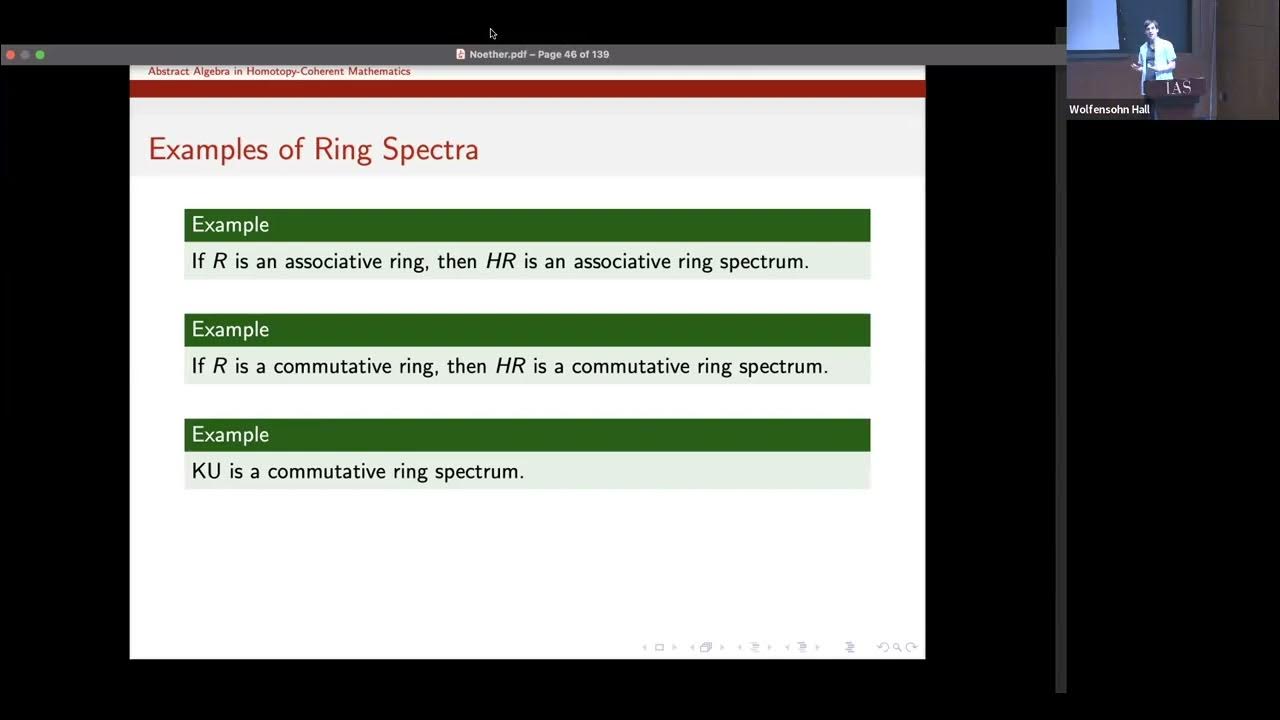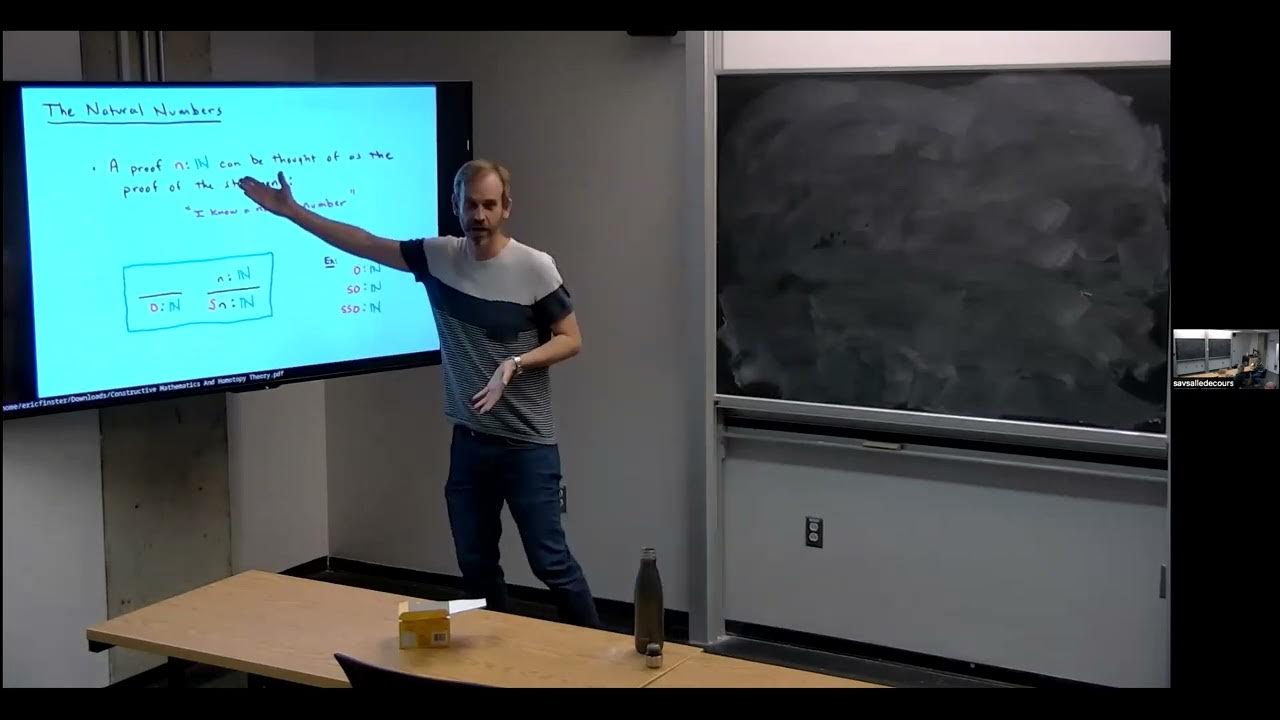Introduction to Homotopy Theory
Homotopy theory is a branch of mathematics that studies the properties of continuous deformations between mathematical objects. It arose from the desire to understand and classify topological spaces up to a certain equivalence relation called homotopy equivalence.
In homotopy theory, two topological spaces are considered equivalent if there exists a continuous transformation, called a homotopy, that continuously deforms one space into the other. This concept of equivalence allows for a more flexible understanding of topological spaces, as it captures the idea that two spaces can be “transformed” into each other without tearing or gluing.
Homotopy theory provides powerful tools and techniques for analyzing and comparing topological spaces. It allows us to distinguish between spaces that have different underlying structures, such as the number of holes or their connectivity properties. For example, the fundamental group, which is a fundamental concept in algebraic topology, can be defined and studied using homotopy theory.
One of the key ideas in homotopy theory is the concept of a homotopy group. Homotopy groups are a sequence of algebraic invariants associated with a topological space, which measure the different ways the space can be deformed. They provide a quantitative measure of the complexity of a space and help classify spaces up to homotopy equivalence.
Homotopy theory has numerous applications in various areas of mathematics and physics. It is used to study the behavior of solutions to differential equations, to classify different shapes and manifolds, and to understand the dynamics of physical systems.
Overall, Homotopy theory is a rich and vibrant field of mathematics that offers a deep understanding of the fundamental structure of topological spaces and provides powerful tools for studying and classifying them. It has wide-ranging applications and plays a central role in many areas of mathematics and physics.
Basic Concepts in Homotopy Theory
Homotopy theory is a branch of mathematics that deals with the study of continuous mappings between topological spaces. It was originally developed to investigate questions related to the deformation and classification of spaces.
One of the fundamental concepts in homotopy theory is that of a homotopy. A homotopy between two continuous maps f and g from one space to another is a continuous mapping H: X × I -> Y, where X and Y are topological spaces, and I is the unit interval [0,1], such that H(x,0) = f(x) and H(x,1) = g(x) for all x in X. In simple terms, a homotopy provides a continuous deformation between two maps.
Homotopy equivalence is another important concept in homotopy theory. Two spaces X and Y are said to be homotopy equivalent if there exist continuous maps f: X -> Y and g: Y -> X, such that the compositions g ◦ f and f ◦ g are homotopy equivalent to the respective identity maps on X and Y. Homotopy equivalence essentially means that the two spaces can be continuously deformed into each other.
Homotopy groups are another crucial tool in homotopy theory. The n-th homotopy group of a space X, denoted by π_n(X), represents the set of homotopy classes of continuous maps from the n-dimensional sphere S^n to X. These groups provide information about the “holes” or “obstructions” in a space that prevent it from being smoothly deformed or contracted.
Homotopy theory also deals with the notion of fibrations and fibrant objects, which are topological spaces that possess certain properties related to homotopy theory.
Overall, homotopy theory provides a powerful framework for understanding the structure and properties of topological spaces, and it has applications in various areas of mathematics and physics, including algebraic topology, differential geometry, and mathematical physics.
Homotopy groups and Homotopy Equivalences
Homotopy groups are a fundamental concept in algebraic topology which provide information about the possible ways in which one mathematical space can be continuously deformed into another. Essentially, the homotopy groups characterize the different “holes” or “loops” in a space.
The homotopy group of a space X at a given point x is denoted as πn(X, x) and is defined as the set of equivalence classes of all continuous maps from the n-dimensional sphere S^n to X, where two maps are considered equivalent if they can be continuously deformed into each other.
Homotopy equivalences, on the other hand, are a specific type of continuous map between spaces that preserve their fundamental topological characteristics. A map f: X -> Y is said to be a homotopy equivalence if there exists another continuous map g: Y -> X such that the composition of f and g, as well as the composition of g and f, are homotopic to the respective identity maps on X and Y.
Homotopy theory is the branch of topology that studies deformations of spaces and the properties preserved under continuous transformations. It provides tools and techniques to analyze the behavior of spaces under deformations, and allows for the classification and comparison of different types of spaces based on their homotopy properties.
In summary, homotopy groups and homotopy equivalences are key concepts in homotopy theory that help us understand the possible ways in which spaces can be deformed and the relations between different spaces.
Applications of Homotopy Theory
Homotopy theory is a branch of algebraic topology that studies continuous deformations of topological spaces. It has various applications in mathematics and beyond. Here are some applications of homotopy theory:
1. Classification of topological spaces: Homotopy theory helps classify and distinguish different types of topological spaces based on their homotopy properties. For example, by looking at the fundamental group or higher homotopy groups of a space, one can determine if it is simply connected, has nontrivial holes, or is simply connected but has complicated higher homotopy groups.
2. Algebraic geometry: Homotopy theory provides a bridge between topology and algebraic geometry. It has been used to study algebraic K-theory, which is an important invariant in algebraic geometry. Homotopy theory also helps understand the moduli spaces of algebraic varieties and their deformation theory.
3. Group theory: The study of homotopy classes of maps between spaces relates to the theory of group actions and representation theory. Certain spaces with algebraic structures, called E_n spaces, have applications in the study of topological groups and their representations.
4. Physics: Homotopy theory has applications in mathematical physics, especially in the study of quantum field theories, string theory, and topological phases of matter. The classification of topological defects in physical systems can be done using homotopy theory.
5. Topological data analysis: Homotopy theory is also employed in topological data analysis (TDA), a field that uses topological methods to analyze data. TDA helps uncover hidden structures in high-dimensional data sets and can be used for applications in various fields, such as biology, computer science, and economics.
6. Mathematical modeling: Homotopy theory provides tools for constructing mathematical models of physical and biological phenomena. By studying the homotopy properties of these models, one can gain insight into the behavior and dynamics of the systems being modeled.
These are just a few examples of the many applications of homotopy theory. It is a powerful tool that finds practical uses in various areas of mathematics and beyond.
Current Research in Homotopy Theory
Homotopy theory is a branch of mathematics that studies continuous deformations of mathematical objects. It has applications in various fields, including algebraic topology, differential geometry, and mathematical physics.
Current research in homotopy theory encompasses a wide range of topics, some of which include:
1. Model categories: Researchers are studying various aspects of model categories, a foundational framework for homotopy theory. This includes investigating cofibrant and fibrant replacements, weak equivalences, and fibrant-cofibrant objects.
2. Homotopy limits and colimits: Homotopy limits and colimits are generalizations of traditional limits and colimits in category theory. Researchers are examining properties and constructions of homotopy limits and colimits, such as homotopy pullbacks and pushouts.
3. Higher categories: Higher categories provide a general framework for studying higher-dimensional structures. Homotopy theory plays a crucial role in understanding higher categories, and current research is focused on developing and applying homotopical techniques in higher category theory.
4. Stable homotopy theory: Stable homotopy theory studies homotopy groups of stable objects, such as spectra and chain complexes. Current research aims to explore stable homotopy theory from both an algebraic and geometric perspective, including computations of stable homotopy groups and understanding their algebraic structure.
5. Algebraic K-theory: Algebraic K-theory is a powerful tool in algebraic topology and number theory. Homotopy theory provides crucial insights into algebraic K-theory, and current research focuses on developing algebraic models for K-theory and understanding its relationships with other branches of mathematics.
6. Algebraic and geometric models in homotopy theory: Researchers are working on constructing algebraic and geometric models for studying homotopy theory. This includes developing categorical and geometric techniques to describe and understand homotopy types, such as simplicial sets, infinity-categories, and operads.
Overall, current research in homotopy theory is aimed at deepening our understanding of the fundamental structures and phenomena in mathematics through the study of continuous deformations and higher-dimensional structures.
Topics related to Homotopy Theory
Foundations of Mathematics and Homotopy Theory – Vladimir Voevodsky – YouTube
Foundations of Mathematics and Homotopy Theory – Vladimir Voevodsky – YouTube
Homotopy Type Theory Discussed – Computerphile – YouTube
Homotopy Type Theory Discussed – Computerphile – YouTube
BlackFriday23_TT_Video_60s Trailer_Bow Black_Logo@H1-BF@SH1@TL1@BL1_16x9 C-Shape_YouTube_v1_v1 – YouTube
BlackFriday23_TT_Video_60s Trailer_Bow Black_Logo@H1-BF@SH1@TL1@BL1_16x9 C-Shape_YouTube_v1_v1 – YouTube
Abstract Algebra in Homotopy-Coherent Mathematics – Jacob Lurie – YouTube
Abstract Algebra in Homotopy-Coherent Mathematics – Jacob Lurie – YouTube
What is…homotopy type theory? – YouTube
What is…homotopy type theory? – YouTube
Math Made Easy by StudyPug! F3.0.0ac – YouTube
Math Made Easy by StudyPug! F3.0.0ac – YouTube
Eric Finster : Homotopy Theory and Constructive Mathematics – YouTube
Eric Finster : Homotopy Theory and Constructive Mathematics – YouTube
Maria Yakerson – Twisted K-theory in Motivic Homotopy Theory – YouTube
Maria Yakerson – Twisted K-theory in Motivic Homotopy Theory – YouTube
Computer Science and Homotopy Theory – Vladimir Voevodsky – YouTube
Computer Science and Homotopy Theory – Vladimir Voevodsky – YouTube
An Intuitive Introduction to Motivic Homotopy Theory – Vladimir Voevodsky [2002] – YouTube
An Intuitive Introduction to Motivic Homotopy Theory – Vladimir Voevodsky [2002] – YouTube

Peter Scholze is a distinguished German mathematician born on December 11, 1987. Widely recognized for his profound contributions to arithmetic algebraic geometry, Scholze gained international acclaim for his work on perfectoid spaces. This innovative work has significantly impacted the field of mathematics, particularly in the study of arithmetic geometry. He is a leading figure in the mathematical community.










